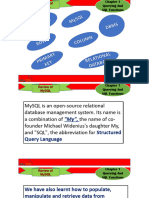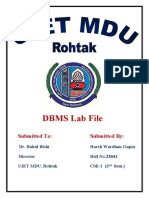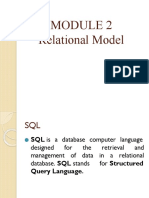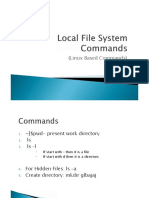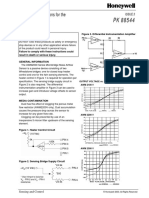0% found this document useful (0 votes)
116 views14 pagesMySQL SQL Commands and Syntax Guide
MySQL is an open-source relational database management system that is used widely for web applications. It was originally developed and supported by the Swedish company MySQL AB. In 2008, MySQL AB was acquired by Sun Microsystems. MySQL provides many advantages including being free to use, working with many programming languages, and supporting large databases. It is customizable and works quickly even with large datasets.
Uploaded by
Jivesh LakhaniCopyright
© © All Rights Reserved
We take content rights seriously. If you suspect this is your content, claim it here.
Available Formats
Download as PDF, TXT or read online on Scribd
0% found this document useful (0 votes)
116 views14 pagesMySQL SQL Commands and Syntax Guide
MySQL is an open-source relational database management system that is used widely for web applications. It was originally developed and supported by the Swedish company MySQL AB. In 2008, MySQL AB was acquired by Sun Microsystems. MySQL provides many advantages including being free to use, working with many programming languages, and supporting large databases. It is customizable and works quickly even with large datasets.
Uploaded by
Jivesh LakhaniCopyright
© © All Rights Reserved
We take content rights seriously. If you suspect this is your content, claim it here.
Available Formats
Download as PDF, TXT or read online on Scribd
/ 14


























